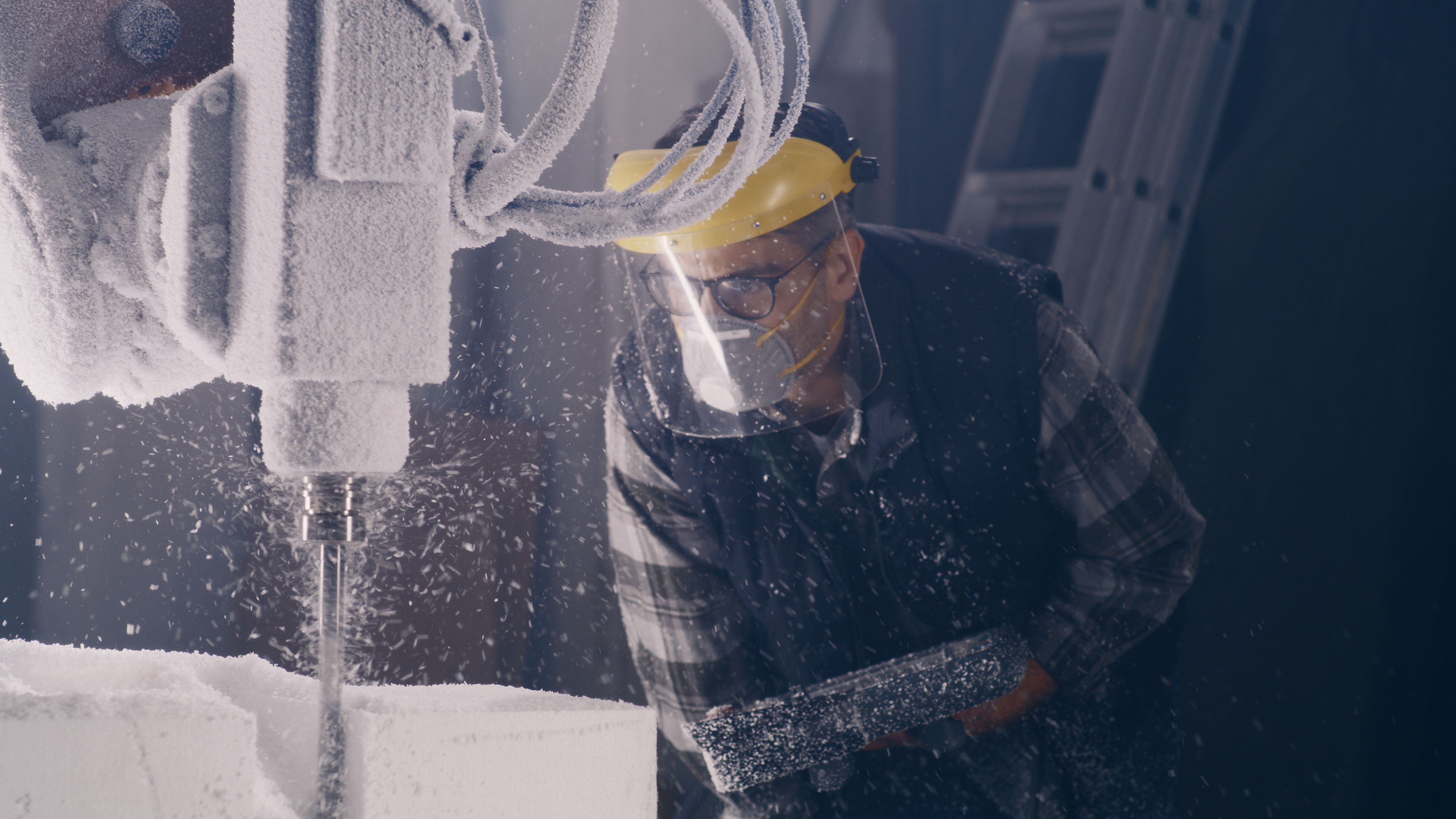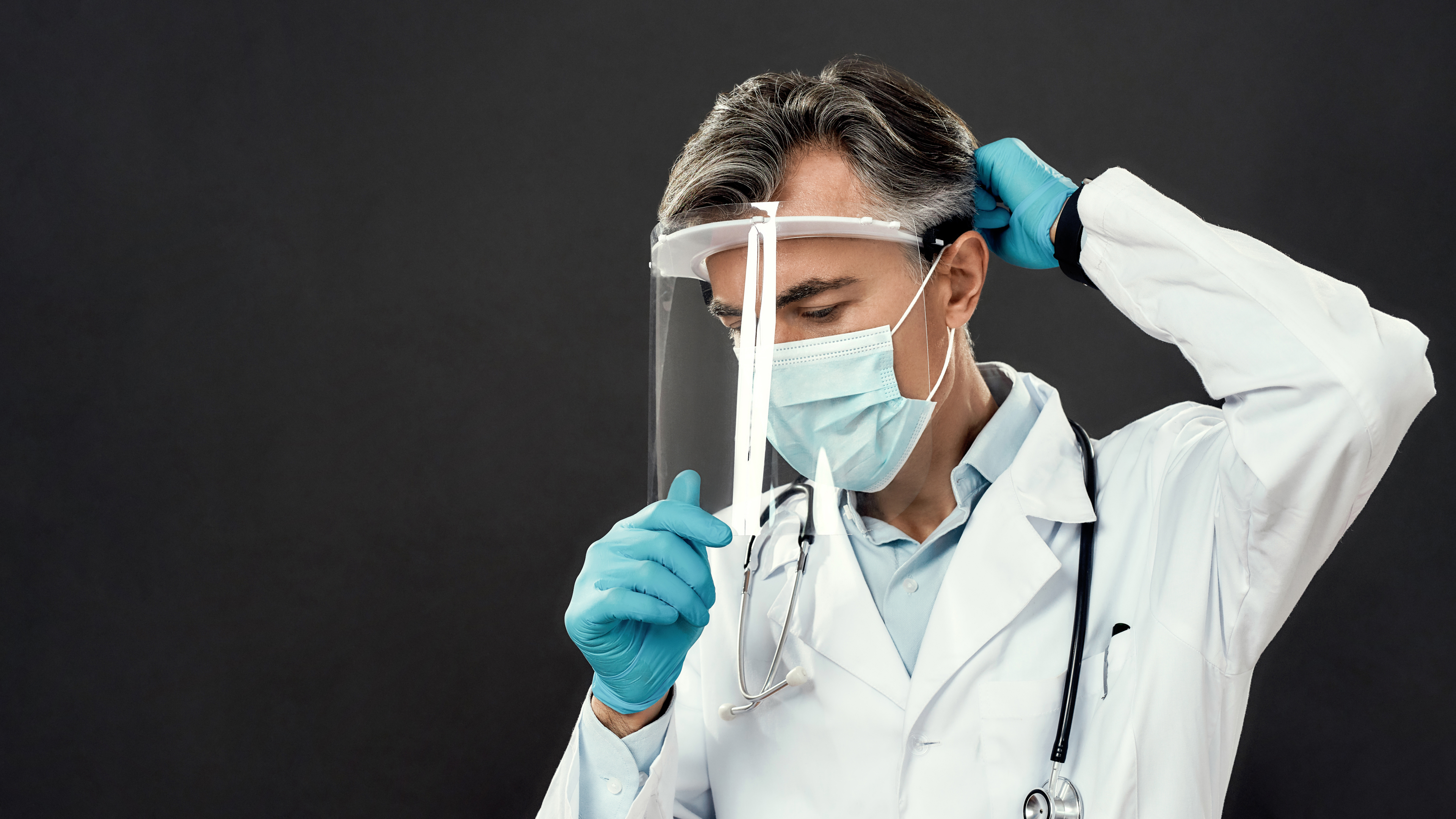In a world where safety concerns permeate every aspect of our daily lives—from the global health crisis posed by infectious diseases to the physical dangers encountered in various workplaces—protective face shields have emerged as invaluable allies. These shields are not just pieces of plastic; they are barriers that protect us from unseen enemies and workplace accidents. This post explores the critical role of protective face shields, and the diverse types available for different settings, and offers guidance on selecting, maintaining, and effectively using them.

The Vital Role of Protective Face Shields
Protective face shields serve as a first line of defence in multiple environments. For healthcare professionals, they are indispensable tools in the battle against infectious diseases, providing an additional layer of protection against airborne particles and fluids. In industrial settings, such as construction sites, they shield workers from flying debris, chemical splashes, and other occupational hazards. For the general public, face shields offer an extra precaution in navigating through pandemic-affected spaces, safeguarding against the transmission of viruses.
Types of Face Shields: A Shield for Every Need
Face shields come in various designs, each tailored to meet specific requirements and threats. Here's a brief overview:
-
Healthcare Face Shields: Designed with a focus on anti-fogging and fluid resistance, these shields provide comprehensive facial protection for medical staff, reducing the risk of viral or bacterial infections.
-
Industrial Face Shields: These are built to withstand impacts, heat, and chemical exposure, featuring durable materials and designs that comply with occupational safety standards.
-
General Use Face Shields: Lightweight and comfortable, these shields are suitable for everyday use by the general public, offering protection against respiratory droplets and particles.
Choosing the Right Face Shield
Selecting the appropriate face shield involves considering various factors:
-
Material: Polycarbonate shields offer high impact resistance, while PET and acetate options provide clarity and chemical resistance.
-
Visibility: Opt for anti-fog coatings and scratch-resistant materials to maintain clear vision during prolonged use.
-
Comfort: Adjustable headbands and cushioned forehead bands enhance comfort, essential for extended wear.
-
Durability: The longevity of a face shield depends on its material quality and design. Reusable models should be sturdy and easy to disinfect.
Maintenance and Cleaning: Ensuring Optimal Protection
Proper care extends the life of a face shield and ensures it continues to offer effective protection. Here are some maintenance tips:
-
Clean with mild soap and warm water to remove debris and maintain clarity.
-
Disinfect with alcohol-based solutions (at least 70% alcohol) or bleach solutions, following the manufacturer's guidelines.
-
Inspect regularly for scratches, cracks, or other damage that could compromise protection.
Real-Life Testimonials: The Impact of Face Shields
Real-life stories underscore the value of face shields:
-
A nurse in a COVID-19 ward shares how face shields have been crucial in preventing direct exposure to the virus, especially during high-risk procedures.
-
A construction worker recounts an incident where a face shield prevented serious injury from flying debris.
-
Members of the general public describe how using face shields in crowded places adds an extra sense of security amidst the pandemic.
Understanding the Types of Protective Face Shields
Protective face shields serve as a critical barrier against various hazards, including splashes, sprays, and spatters of bodily fluids, as well as protecting against impacts or chemical splashes in industrial settings. These shields come in several designs, each tailored to specific requirements and levels of protection. The most common types include full-face shields, which cover the entire face from the forehead down, and half-face shields, which protect from the eyebrows to just below the nose. Some designs incorporate features like anti-fog coatings, UV protection, and scratch resistance, enhancing their functionality and wearer comfort. Another essential distinction lies between disposable and reusable models; disposable face shields are designed for single use and then discarded, making them ideal for medical environments to prevent cross-contamination. In contrast, reusable shields can be cleaned and disinfected for multiple uses, making them a cost-effective and environmentally friendly option for ongoing protection.
Choosing the Right Protective Face Shield
Selecting the appropriate face shield depends on several factors, including the specific hazards present, required visibility, comfort, and compliance with safety standards. For healthcare professionals, shields with anti-fog and anti-glare properties might be preferred to ensure clear visibility during procedures. Industrial environments, where the risk of impacts or chemical exposure exists, require shields made from materials that can withstand these specific threats. The fit and adjustability of the headband or harness are also crucial; a secure fit ensures the shield stays in place during movement, while comfort features like padded headbands can make extended wear more tolerable. Compliance with regulatory standards such as those set by OSHA in the United States or the European EN166 standard is essential to guarantee adequate protection. Always consult with safety professionals or guidelines specific to your industry or activity when choosing a protective face shield, to ensure you are adequately protected against the hazards you face.
Optimising Protection in Medical and Healthcare Environments
In the demanding realms of medical and healthcare environments, protective face shields serve as an effective defence against a variety of hazards. These shields, often equipped with a splash guard, offer excellent protection from harmful chemical splashes and body fluids, scenarios that commonly occur across settings such as laboratories and dental offices. Particularly in areas where exposure to blood pathogens and potential contamination is high, the importance of reliable protection cannot be overstated.
For professionals engaged in dental work protection or pesticide spraying, a face shield with a visor that resists fogging and scratches provides an added layer of security. Not only does this safeguard the user's face from direct exposure to hazardous materials, but it also significantly reduces the risk of inadvertent hand-to-face contact, a common route for pathogen transmission.
To resolve your specific protection needs, our website has streamlined the online shopping experience. With an array of options to suit different environments – from cutting-edge laboratories to intensive care units – selecting the right face shield is straightforward. Users can easily filter search results by colour, adjust for compatibility with existing safety equipment, and even determine the best visor thickness for their particular application. Once the ideal product is identified, adding it to the basket and proceeding to purchase is just a few clicks away. Our stock is updated regularly to ensure that essential protective gear is always available for those in critical fields.

Conclusion: Prioritising Safety with Quality Protective Headwear
The significance of protective face shields cannot be overstated. They are more than just accessories; they are essential tools that protect our health and safety in various settings. By choosing the right face shield, maintaining it properly, and understanding its correct use, we can all contribute to creating safer environments for everyone.
In the face of ongoing health threats and workplace hazards, investing in high-quality protective headwear is a wise and necessary step. Whether you're a healthcare professional, a construction worker, or simply someone navigating the complexities of a pandemic-impacted world, remember that your safety is paramount. A protective face shield could make all the difference.
